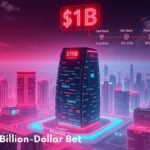Tesla faces a financial riddle that costs the company $1.4 billion. The Financial Times presented a financial conundrum when it uncovered differences between Tesla’s claimed capital expenditures and reported financial statement amounts. For the period spanning the second half of 2024, Tesla allocated $6.3 billion to capital investments, which included factories as well as technology and items that form part of Elon Musk’s future robotaxi-and-Optimus vision. The gross value increase of Property, Plant, and Equipment (PP&E) recorded by Tesla amounted to $4.9 billion despite their $6.3 billion capital expenditure outlay. This unspecified $1.4 billion remains unconfirmed in financial records, causing investors to double-check the documentation.
The financial figures present a mystery, although they should not.
If Tesla operated as an independent business without significant sale transactions or write-offs, then its financial numbers would follow each other precisely. Tesla operates as a vehicle company throughout the world through manufacturing complexes found across three continents. The unexplained $1.4 billion diverts significant funds from Tesla even though it operates with a massive $36.5 billion cash reserve. So what’s the deal? What should investors understand about the accounting discrepancy at Tesla, considering the company operates globally?
Notre Dame professor Tim Morrison emerges from his audit experience at Ernst & Young without causing alarm over this situation. According to him the situation would warrant concern if Tesla had inaccurately reported numbers. He has a few explanations that seem to ease the concern of those who voice alarms. Because Tesla operates in the U.S. and has facilities in Berlin and Shanghai the exchange rate fluctuations between currencies may be causing confusing accounting data. The euro lost value compared to the U.S. dollar in 2022 which led to lowered reported overseas asset worth. Currency fluctuations remain a wild unknown, according to the market expert Morrison. Understanding every minor disturbance with accuracy proves challenging.
People Need to Understand the Other Causes which Might Be Responsible
There’s more to chew on. The company has avoided mentioning the disposal of important assets and has refrained from making “impairment” write-offs for assets that have become useless. The statement about degraded resources and assets stays silent. Morrison suggests that depreciated items that have reached their expiration period, like old machines, get completely removed from the company records together with their total worth. The reduction in asset value might account for this part of the reported difference. Although the presentation was unexciting, it remains a realistic explanation. The Corporate Finance Institute confirms this point because assets disappear entirely from the balance sheet once they become worthless.
The total $1.4 billion loss continues to be a significant budget amount regardless of exchange rate effects and discarded equipment. Tesla continues its heavy investment in AI and robotaxis and Optimus development through $5 billion, CFO Taneja confirmed during the January earnings call. According to Taneja, the company is rigorously focused on maximizing capital expenditure efficiency. Every dollar from the company’s AI investment sector aims at generating fast returns. With annual expenditures at $11.3 billion increased by $2.4 billion from 2023, you should reconsider investing in capital exchange or discarded items due to small uncertainties.
Debt, Cash, and Big Bets
Despite its massive $36.5 billion cash reserves Tesla chose to borrow $3.9 billion from debt markets during the previous year. Why borrow when you’re flush? Morrison displays no concern because “Tesla as a growth beast would not see that amount of cash as excessive.” The company shows strong confidence in its upcoming ventures. Stockholders view Elon Musk’s mission plans so positively that they buy into his vision at a price equivalent to 90 times projected future earnings, according to S&P Cap IQ’s forecast. The AI and robotaxi investments of Bulls have strong potential to deliver exponential returns, according to their market supporters.
So, Should We Freak Out?
Morrison points out an important truth by answering that Tesla is not vulnerable. The company has utilized PwC as its auditor since 2005,, yet detecting this gap has not revealed any significant misconduct. Several organizational factors such as foreign currency fluctuations together with retired assets or spending log timing practices could potentially resolve this matter. According to Morrison, the Financial Times accuses Tesla of a weak justification—yet he maintains that U.S. assets represent most of Tesla’s long-term assets. He explains that a minimal portion of foreign operations could lead to meaningful changes in financial reports.
The situation is a question that perplexes rather than an issue from which scandals may arise. While Tesla possesses enough funds and confidence to extend its futuristic projects the market wants greater financial transparency. Missing funds amounting to $1.4 billion in the next earnings declaration will probably trigger louder concerns regarding weak internal controls. The money’s placement remains a mystery as Musk rules his domain until such time.








